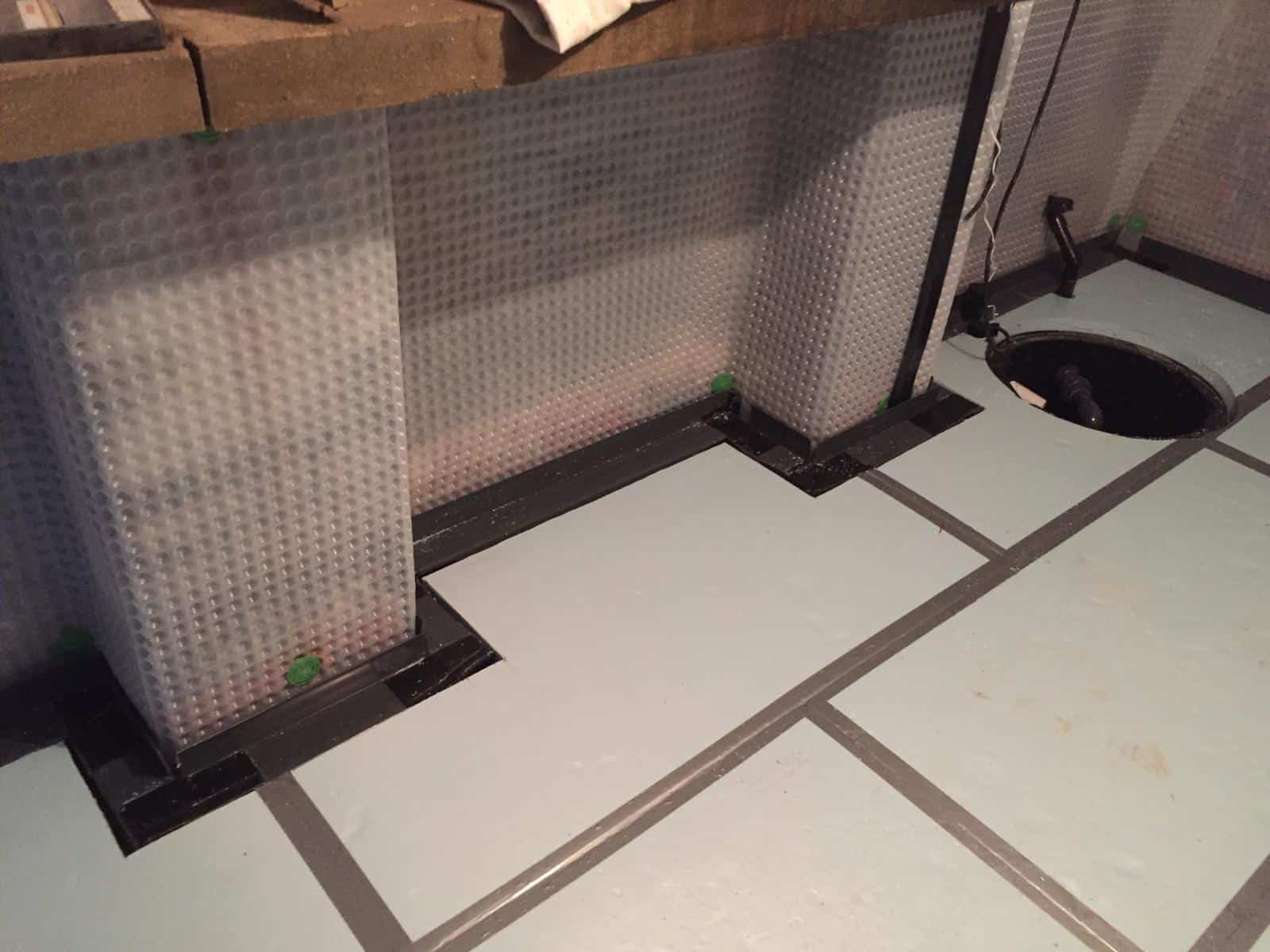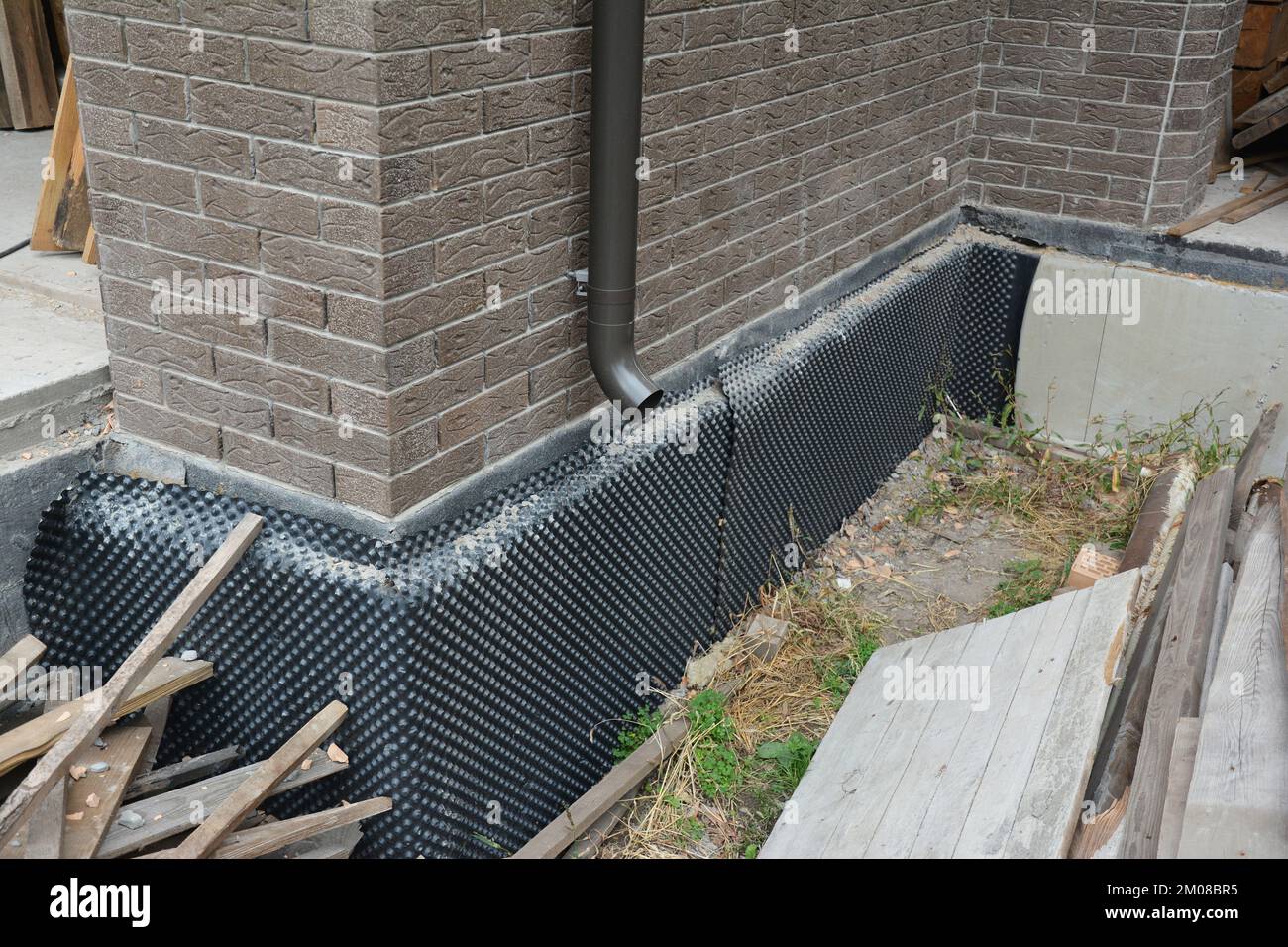7 Proven ways to manage humidity with mould treatment newcastle
7 Proven ways to manage humidity with mould treatment newcastle
Blog Article
Discovering the Different Strategies and Solutions for Effective Damp Proofing
Moisture in structures positions considerable obstacles to both architectural integrity and indoor air quality. Different strategies and options have emerged to battle this pervasive issue. From typical damp-proof membranes to ingenious chemical therapies, each technique uses distinct benefits. Recognizing these alternatives is essential for efficient dampness control. Picking the ideal remedy depends on details structure conditions and needs, triggering further exploration right into the most reliable moist proofing methods available.
Understanding the Reasons For Moisture
Moisture can arise from numerous sources, comprehending these reasons is crucial for efficient remediation. Commonly, dampness originates from three primary resources: climbing wet, passing through moist, and condensation. Climbing wet occurs when groundwater takes a trip up through porous products, such as brick or rock, frequently due to a lack of a reliable barrier (damp removal newcastle). Passing through wet is usually triggered by exterior factors, including roof covering leakages, malfunctioning seamless gutters, or damaged walls, allowing water to penetrate a building. Condensation, on the various other hand, arises from excess wetness airborne, typically aggravated by bad air flow and temperature differences, resulting in water beads basing on surface areas. Identifying these underlying issues is crucial, as each sort of wetness requires a tailored approach for remediation. Correct assessment aids in determining one of the most efficient solutions, ultimately securing the structural stability of a structure and boosting interior air quality
Typical Damp-Proof Membranes

Chemical Damp-Proofing Solutions
Chemical damp-proofing services use an innovative approach to stop dampness invasion in structures. These techniques normally include the application of liquid chemicals that penetrate stonework and create a barrier against climbing damp. Typically utilized chemicals consist of silanes, siloxanes, and various other water-repellent agents that react with surface area materials to produce a hydrophobic layer.The application procedure normally calls for exploration openings right into the walls, infusing the chemical option, and permitting it to treat. This technique is especially useful for older frameworks where conventional damp-proof membrane layers might be unwise. Chemical damp-proofing can be less disruptive and more economical than substantial remodelling projects.While efficient, these solutions depend on appropriate application and ecological conditions for peak performance. damp specialist newcastle. Routine upkeep and monitoring are vital to assure the long life of the damp-proofing treatment. Generally, chemical damp-proofing represents a flexible option for securing structures versus moisture-related damages
Tooth Cavity Wall Building Methods
Cavity wall building and construction strategies offer various advantages, particularly in dampness control and energy performance. By integrating an air space in between two layers of stonework, these wall surfaces properly minimize water access while improving insulation. This mix not only secures structures from wetness however also adds to minimized power consumption.
Advantages of Tooth Cavity Walls
When taking into consideration efficient damp proofing methods, the benefits of cavity wall surfaces stand out plainly. Tooth cavity wall surfaces consist of 2 separate layers, developing an air space that efficiently minimizes dampness infiltration. This style minimizes the danger of moisture, as the external wall surface works as a barrier against rain and water ingress. Additionally, tooth cavity walls improve thermal insulation, which adds to power efficiency by minimizing heat loss. They also offer audio insulation, helping to produce a quieter indoor environment. The air void enables for ventilation, which helps in dampness control and minimizes the possibility of mold and mildew development. These benefits not just enhance the general convenience of a building but additionally add to its longevity and architectural integrity.
Wetness Control Techniques
Reliable wetness control approaches are important in tooth cavity wall building to guarantee long-term security versus wetness. One primary method involves the consolidation of weep openings, which promote water drain from the cavity, stopping build-up. Furthermore, using breathable membrane layers can assist take care of moisture levels while allowing caught vapor to leave. Appropriate placement of insulation is likewise critical, as it should not obstruct drain paths. Guaranteeing that the outer fallen leaves of the cavity wall are built with waterproof products enhances general durability. Normal upkeep checks are necessary to identify any obstructions or damage early, securing the structure's integrity. Ultimately, a mix of these techniques creates a durable defense versus dampness invasion in dental caries wall surfaces.
Insulation and Energy Effectiveness
Insulation plays an important duty in improving power performance within cavity wall building and construction. By incorporating insulating materials, these wall surfaces create a thermal obstacle that reduces warmth loss and decreases energy usage. Effective insulation not only helps keep a secure interior temperature but additionally reduces the threat of moisture, as it prevents condensation within the wall surface cavity. Numerous techniques, such as making use of stiff foam boards or mineral woollen, can be utilized to accomplish optimal insulation efficiency. Additionally, appropriate installment is necessary to assure that gaps and voids are decreased, which can otherwise jeopardize energy performance. Eventually, a well-insulated dental caries wall surface contributes greatly to total sustainability and reduces cooling and heating prices for homeowners.
Outside Damp Proofing Techniques
Exterior moist proofing approaches are vital for shielding frameworks from wetness infiltration. Two efficient methods consist of the application of water-proof membrane layers and the setup of French drains pipes. These solutions help minimize water buildup and maintain the stability of buildings.
Waterproof Membrane Layer Application
While different methods exist for avoiding dampness access, the application of waterproof membranes stays a very effective outside damp proofing technique. These membranes are generally made from products such as polyethylene, rubber, or customized asphalt, providing a robust obstacle versus water penetration. The installation process entails applying the membrane to the outside surfaces of walls or foundations, making sure total coverage to stop leaks. Proper attachment and sealing at joints are crucial to maximizing performance. Waterproof membranes can be applied in numerous forms, including fluid finishes and sheet membranes, enabling flexibility based on the specific demands of the framework. This method not only shields structures from wetness however additionally improves their long life and architectural integrity.
French Drainpipe Setup
One reliable approach for managing groundwater and avoiding wetness build-up around a building's structure is the installment of a French drainpipe. This water drainage system contains a trench full of gravel and a perforated pipeline that reroutes surface water away from the structure. Proper setup calls for careful preparation, guaranteeing that the drain slopes away from the structure to facilitate excellent water circulation. In addition, the area of the drain is crucial; it must be placed in areas prone to pooling or excess dampness. Normal maintenance, including clearing up particles from the crushed rock and ensuring the pipeline continues to be unhampered, is crucial for lasting effectiveness. Eventually, a well-installed French drainpipe can greatly decrease the threat of water-related issues in foundations and cellars.
Interior Waterproofing Methods
Inside waterproofing methods are essential for safeguarding a structure's interior from moisture infiltration and potential water damages. These methods generally include the application of customized materials and techniques designed to produce a dampness barrier within the framework. One usual approach is making use of waterproof finishings or sealers on wall surfaces and floors, which avoid moisture from permeating surfaces.Additionally, mounting indoor water drainage systems, such as sump pumps, can efficiently handle water buildup in basements and crawl areas. Another technique involves using vapor barriers, which are mounted to hinder dampness motion from the ground right into living spaces.Moreover, attending to any kind of fractures or gaps in walls or structures with suitable sealers guarantees a thorough defense versus water invasion. By executing these indoor waterproofing methods, homeowner can substantially reduce the risk of mold and mildew growth, structural damage, and various other moisture-related issues. Appropriate implementation of these strategies is vital for long-lasting security and structure integrity.
Normal Upkeep and Evaluation Practices
Regular upkeep and inspection methods are important for guaranteeing the long-term performance of wet proofing remedies in any type of structure. Regular checks make it possible for homeowner to determine very early signs of dampness intrusion, such as peeling paint, mold development, and stuffy odors. These indicators can signal underlying problems that need prompt attention.Inspections should be performed a minimum of yearly, concentrating on at risk areas like basements, crawl areas, and outside wall surfaces. Throughout these analyses, property owners should take a look at sealants, drain systems, and ventilation to verify they operate correctly.Additionally, keeping rain gutters and downspouts is vital, as stopped up systems can cause water accumulation near the structure. Carrying out a normal maintenance timetable, together with timely repair work, can significantly expand the life-span of moist proofing procedures and shield the structural stability of the building. Proactive procedures inevitably add to the total health and wellness of the living environment.
Regularly Asked Questions
The Length Of Time Does Damp Proofing Commonly Last?
The period of moist proofing efficiency varies, typically lasting in between 20 to 50 years. Aspects such as application high quality, environmental problems, and upkeep methods greatly affect the longevity of click here the moist proofing therapy.

Can I Damp Proof My Home Myself?
The individual considered the feasibility of do it yourself damp proofing. With proper research and the appropriate materials, it is possible. They additionally identified the importance of specialist advice to assure durable efficiency and avoid future problems.
What Are the Indicators of Ineffective Damp Proofing?
Indicators of ineffective wet proofing consist of relentless musty smells, noticeable mold and mildew development, peeling paint, moist spots on wall surfaces, and wood degeneration - damp proofing newcastle. Home owners should deal with these problems promptly to avoid additional damage and health issues
Does Damp Proofing Affect Indoor Air High Quality?

Just How Much Does Specialist Damp Proofing Cost?
Professional damp proofing prices vary significantly, normally varying from $1,000 to $5,000 relying on the property's size, the level of the moist problem, and selected approaches. Each scenario requires a tailored analysis for precise pricing. Commonly, wetness stems from three main sources: increasing wet, passing through moist, and condensation. When considering efficient damp proofing techniques, the advantages of tooth cavity walls stand out plainly. Outside moist proofing approaches are vital for safeguarding structures from wetness infiltration. While numerous techniques exist for avoiding moisture access, the application of waterproof membrane layers continues to be a very reliable external wet proofing strategy. Indications of inefficient damp proofing consist of persistent musty smells, visible mold growth, peeling paint, damp patches on walls, and timber degeneration.
Report this page